Tomorrow marks the 156th anniversary of Juneteenth, the oldest commemoration marking the end of slavery in the United States of America. Frederick Douglass, a former enslaved person himself, even referred to it as the second Independence Day. Also known as Freedom Day, Jubilee Day, Liberation Day, and Emancipation Day, the word “Juneteenth” is an amalgamation of “June” and the “19th.”. Let’s turn back the hands of time for a moment and look at what happened 156 years ago.
On June 19, 1865, federal troops under Major General Gordon Granger arrived in Galveston, Texas, to deliver an unexpected but welcomed order to the enslaved population living in and around this city located on a barrier island. General Order Number 3 states as follows:
Headquarters District of Texas
Galveston Texas June 19th 1865
General Orders No. 3
The people of Texas are informed that, in accordance with a proclamation from the Executive of the United States, all slaves are free. This involves an absolute equality of personal rights and rights of property between former masters and slaves, and the connection heretofore existing between them becomes that between employer and hired labor.
The freedmen are advised to remain quietly at their present homes and work for wages. They are informed that they will not be allowed to collect at military posts and that they will not be supported in idleness either there or elsewhere.
By order of Major General Granger
F.W. EMERY
Major A.A.Genl
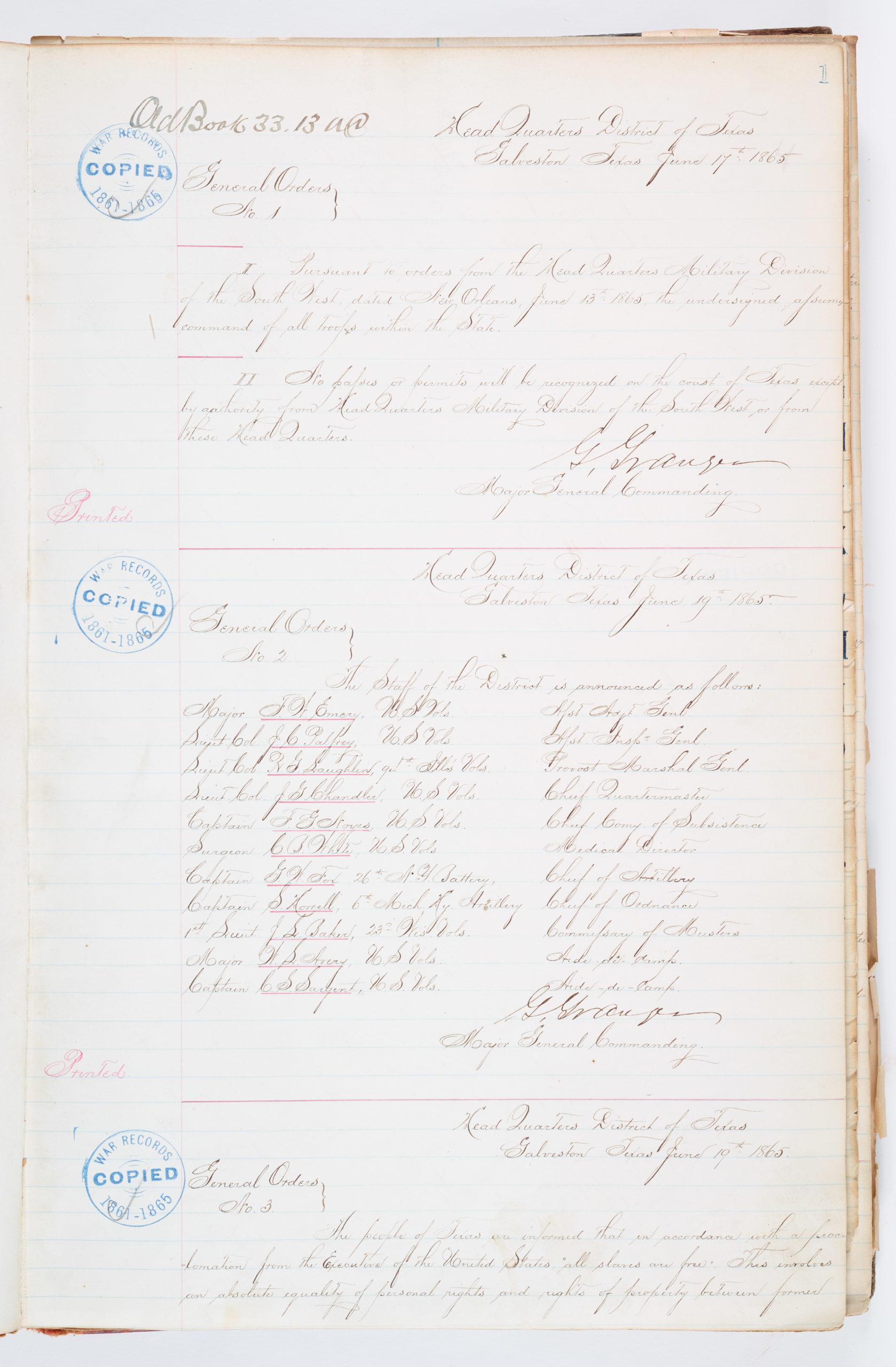
This order came almost two and a half years after the Emancipation Proclamation went into effect on January 1, 1863. The news of freedom from this proclamation never reached the ears of the estimated 250,000 people still held in bondage in Texas. Some historians and scholars believe those in power somehow suppressed the news to keep them enslaved for as long as possible. The 13th Amendment followed six months later, abolishing slavery forever and making it illegal in the country.
On June 19, 1966, Texas organized the first celebration in honor of this historic event. It was a day filled with prayer services, music, and fellowship. As people migrated back and forth across the country, the commemoration and celebration of Juneteenth followed. In 1979, Texas became the first state to make it an official state holiday. Since then, 49 states have officially recognized or observed the day with moments of remembrance, parades, festivals, music, and other activities. It is also celebrated outside of the United States and includes celebrations of African American culture and achievements.
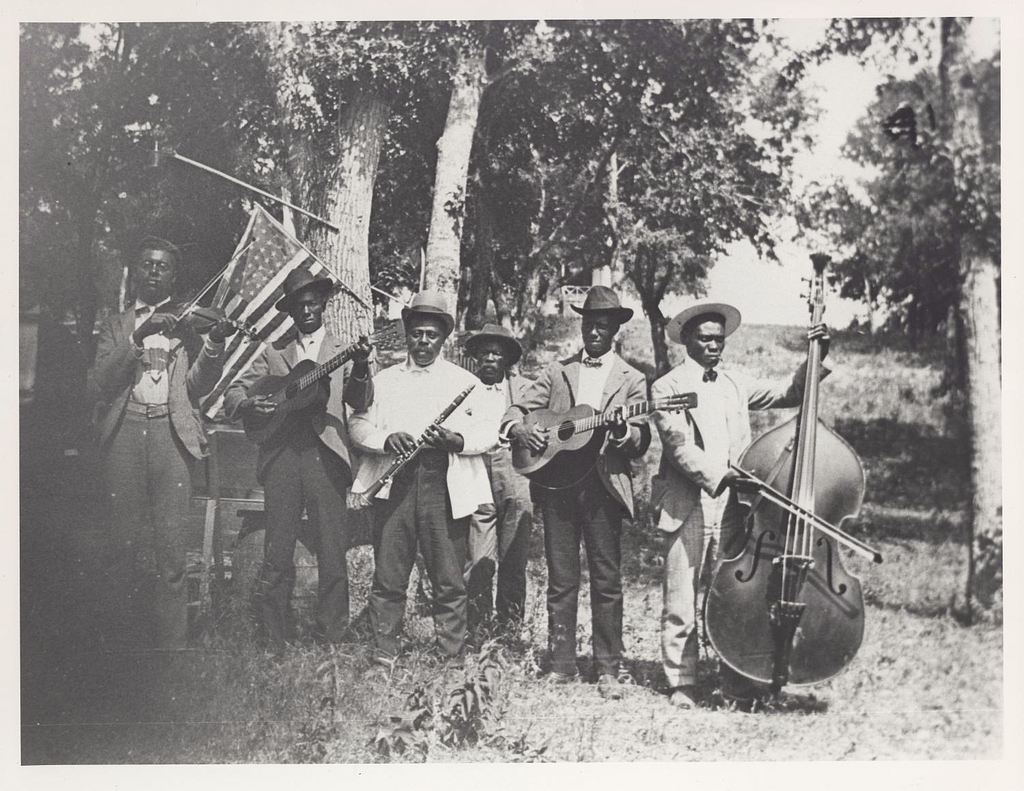
Another part of celebrating Juneteenth is feasting! Now when it comes to the food, there is no one way to celebrate! Meals tend to be steeped in tradition and, of course, vary by geographic region. It was not uncommon to find fried chicken, various barbecued meats (chicken, chopped pork, spareribs, brisket, hot links), macaroni and cheese, potato salad, tea cakes, greens, and more. Here in Virginia, one may find oysters, blue crabs, trout, country hams, catfish, and Brunswick stew. (Is anybody hungry yet?!)
As folks stood looking (and drooling!) at the spread awaiting them, they could not help notice dishes of various hues of red. According to the James Beard Award winner, chef, and culinary historian Michael Twitty, the color red is contributed “to the enslaved Yoruba and Kongo brought to Texas in the 19th century. In the Yoruba religion, red symbolizes strength, spirituality, life, and death — all themes associated with endurance and the struggle toward emancipation. Red also can represent the blood of slaves, shed on the road to freedom.” Others point out that red could also refer to sacrifice, war, resistance, power, and perseverance, and resilience in bondage. Red foods found on Juneteenth feasts’ tables include red velvet cake, red beans and rice, hot links, strawberry pie, watermelon, raspberry tea, hibiscus tea, and Big Red soda.
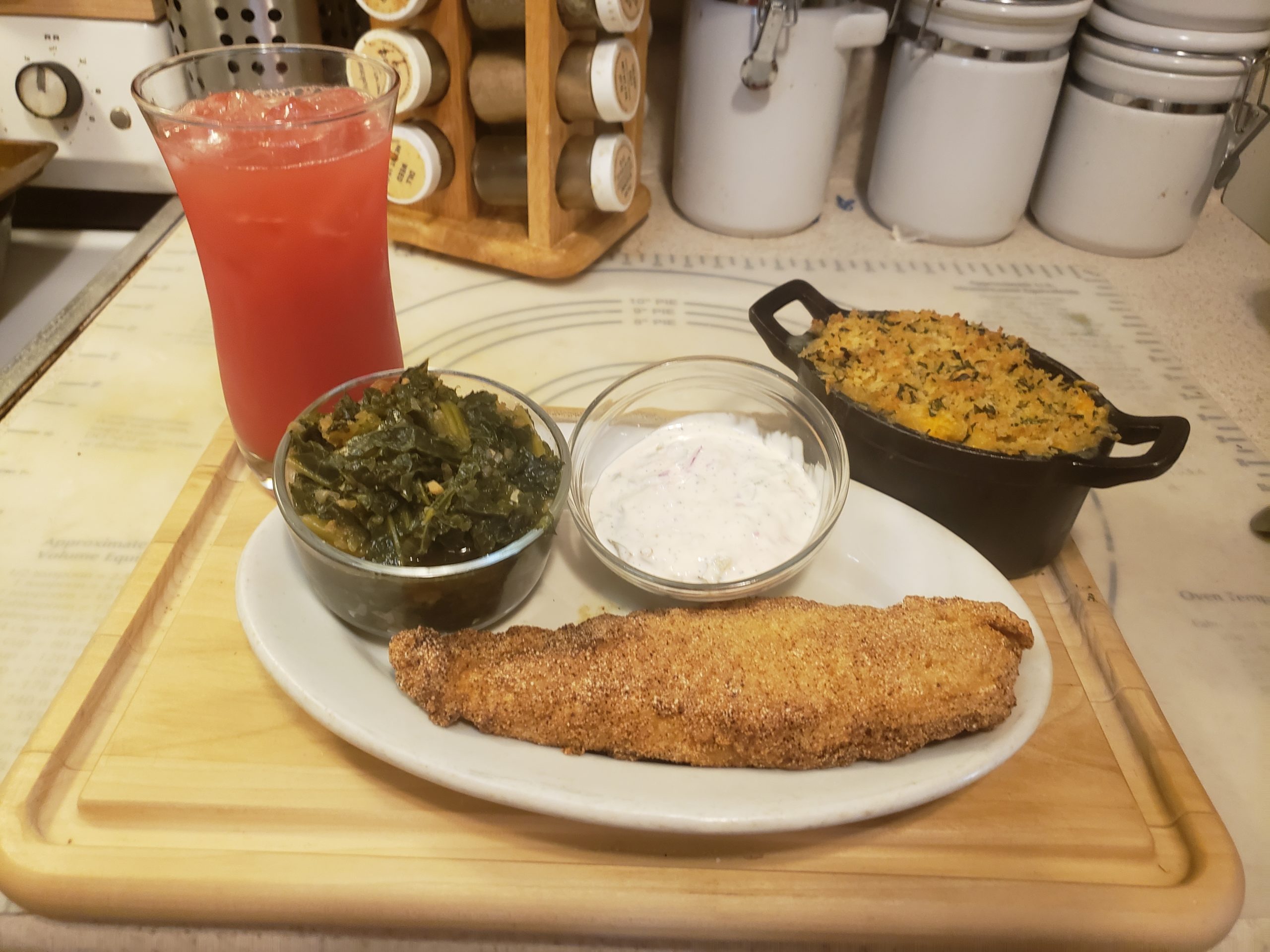
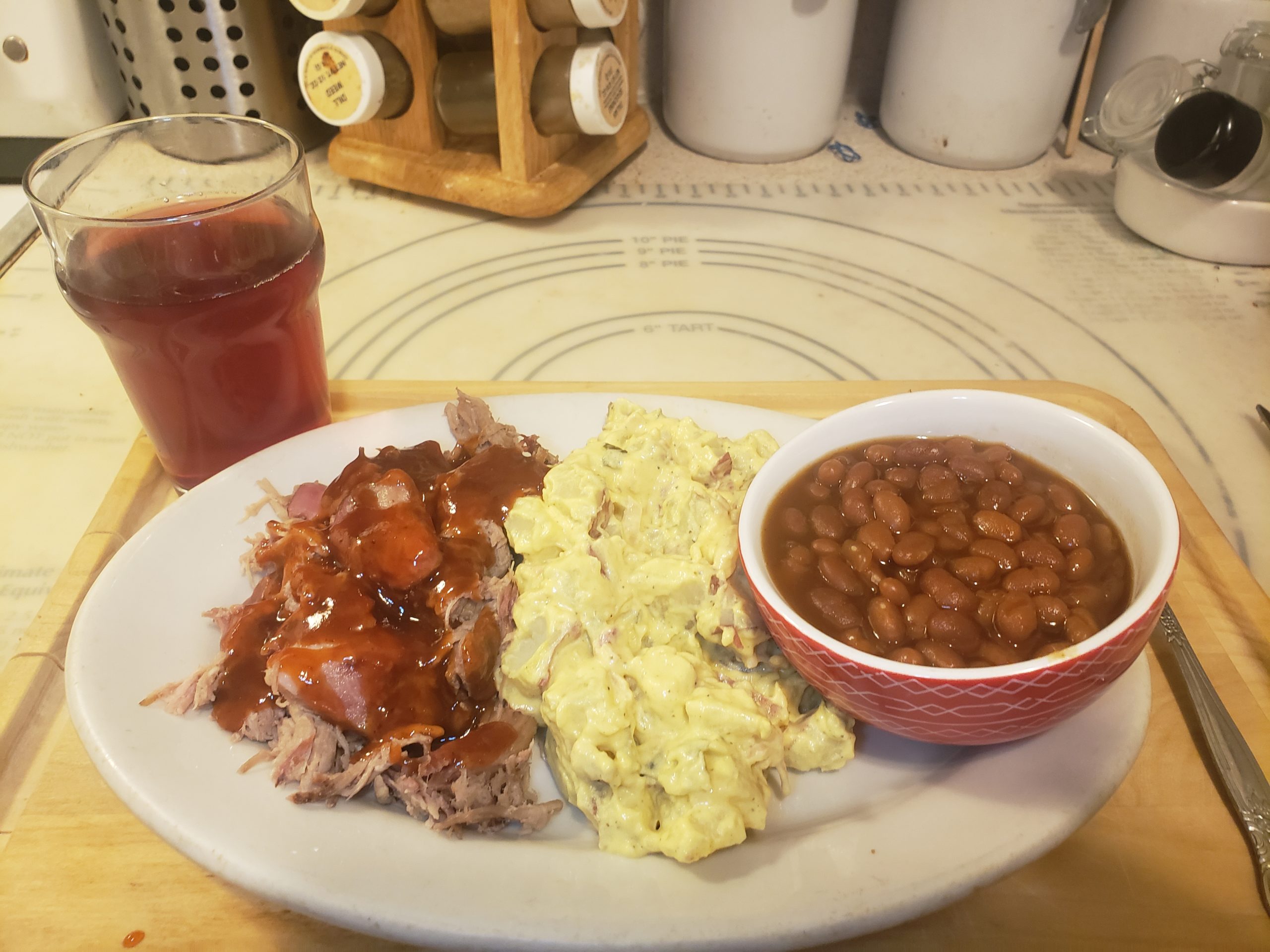
Food and photo: Wisteria Perry/The Mariners’ Museum and Park
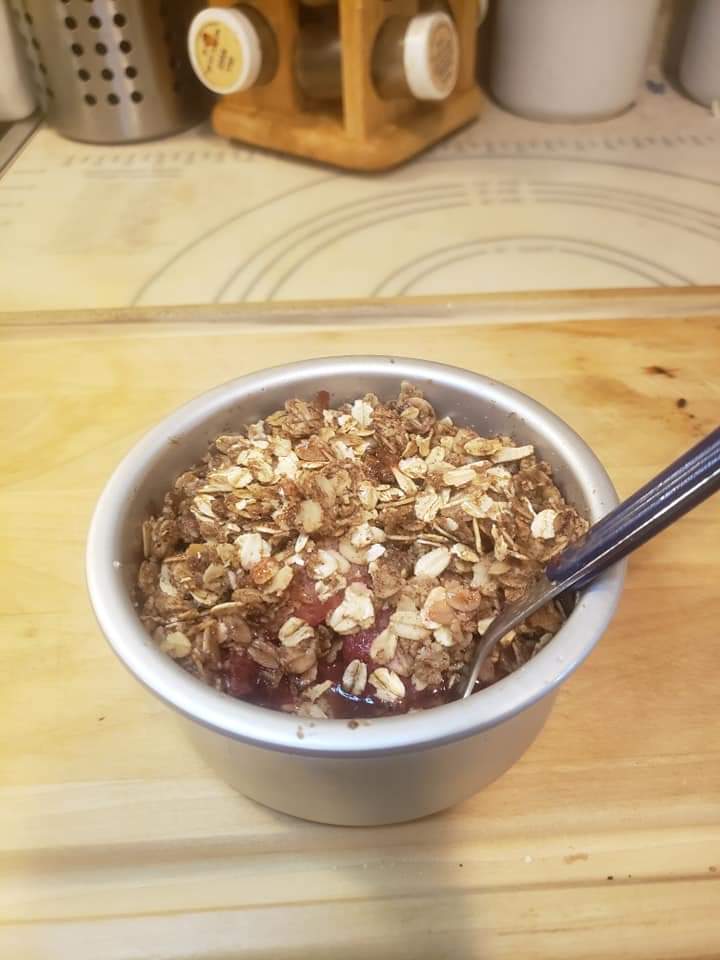
Juneteenth is more than just a day of celebration. It is one of remembrance, reflection, and meaningful conversation. This day is not only about Black or African American history. It is about our shared histories, and it is my wish that we commemorate what this day means together. As we say here at The Mariners’ Museum and Park, that is what connects us to one another!
(To read more about the Emancipation Proclamation, you can find my blog at https://www.marinersmuseum.org/2021/01/the-emancipation-proclamation-what-did-it-actually-say-and-mean-for-african-americans-in-the-1860s/)
- National Archives article, June 20, 2020 https://www.archives.gov/news/articles/juneteenth-original-document
- Article, June 19, 2020 All Red Everything: The Color of Juneteenth https://www.ozy.com/the-new-and-the-next/all-red-everything-the-color-of-juneteenth/344032/